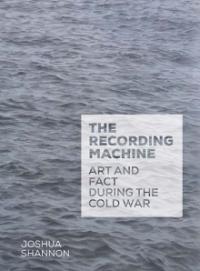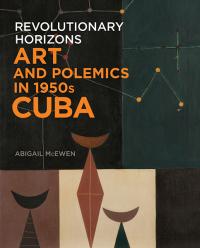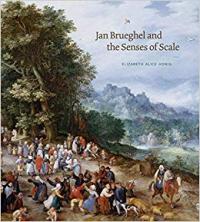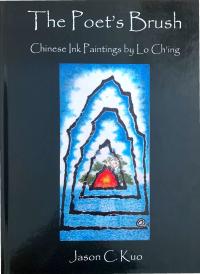Jamison Heckrotte, Recipient of the 2024–2025 Mark H. Sandler Award, Participates in Coriglia Excavation in Orvieto
Jamison Heckrotte, Recipient of the 2024–2025 Mark H. Sandler Award, Participates in Coriglia Excavation in Orvieto


Research in art history and archaeology is an interdisciplinary enterprise.
We're here for Diversity, Equity, and Justice

Professor Shannon's 2017 book, The Recording Machine: Art and Fact During the Cold War (Yale University Press) offers a new understanding of the transformation of the visual arts around 1968. Uncovering a stringent realism in the period's art, this book traces many artists' rejection of essential truths in favor of mere facts and surface appearances. Dubbing this tendency factualism, Shannon illuminates its relationship to the Cold War's preoccupation with data as well as the longer rise of a pervasive culture of fact. The book focuses on the United States and West Germany, closely reading works ranging from conceptual photography and earthworks to photorealist painting and abstraction. The Recording Machine is the winner of a Terra Foundation for American Art International Publication Grant.
Read More about The Recording Machine: Art and Fact During the Cold War
The significance of the sculptural decoration of the Athenian Treasury at Delphi has long been debated. This article demonstrates that the sculptural program is not only an early example of a newfound emphasis on Theseus as the particular hero of Athens, but that it is indicative of an effort to create visual parity between the deeds of Theseus and those of Herakles. The Athenian Treasury is, therefore, the first building to use mythic imagery involving Theseus, Herakles, and their battles against the Amazons as a sophisticated allusion to conflict with Persia and to the decisive role of Athens at the Battle of Marathon in 490 BCE. The mythological themes elaborated in the treasury's decoration ingeniously predicate ancient parallels for contemporary events. My reevaluation of the Athenian Treasury's decoration invites us to reassess the intersections between art, life, and myth in the aftermath of momentous world events like Marathon.
How have Blacks been understood in Japan and represented in Japanese art? What role did the representation of Blacks perform in the construction of Japan’s own racialized identity vis-a-vis both blackness and whiteness? How did the Japanese artistic diaspora in the United States, as part of an Asian minority subject to discrimination—including Japanese and Japanese-Amerian incarceration during World War II—approach the subject? Covering a period of approximately two hundred years, from the early 19th century to the early 21st century, this essay is the first study of its kind and provides a basis for the consideration of the racialized nature of Japanese art and modern art more generally.
Read More about “The Image of the Black in Japanese Art, 19th Century to the Present”

Read More about Revolutionary Horizons: Art and Polemics in 1950s Cuba

As one of the most widely reproduced sculptures of the nineteenth century,
Hiram Powers's Greek Slave was a landmark statue defined in relation to its own reproduction.
This article considers how the popularity of The Greek Slave at exhibition turned the statue into
a ubiquitous subject for a wide range of reproductive media including prints, calotypes,
daguerreotypes, stereoviews, statuettes, and even textiles. It explores these reproductive
representations as sites of sculptural display that shaped the experience of the statue for vast
and varied audiences and as self-reflexive and interpretative responses to the dissemination of
a shackled nude across the transatlantic Victorian world.
Read More (URL): https://www.19thc-artworldwide.org/summer16/korobkin-on-the-greek-
slave-and-materialities-of-reproduction
Read More about The Greek Slave and Materialities of Reproduction

Read More about The Poet's Brush: Chinese Ink Paintings by Lo Ch'ing

Read More about Concrete Cuba: Cuban Geometric Abstraction from the 1950s
This essay explores Vermeer’s painting known as A Woman with a Lute as a visual poem on amorous and artistic longing. A closer look at its key elements—from the musical instrument being tuned by the lady to the map on the wall behind her—shows that this seemingly unmediated view into a private world is as engaged with ideas as Vermeer’s more overtly allegorical compositions. Most notable among these ideas are the relationship between the microcosm and the macrocosm, the notion that every record of the present is a form of “history,” and that the art of painting is no less eloquent in its silence than its sister arts of music or poetry. Ultimately, as in many other images of solitary females, the artist pulls us into a circle of desire, effectively turning us from beholders to coparticipants in a “composition” whereby the absent comes back into presence.